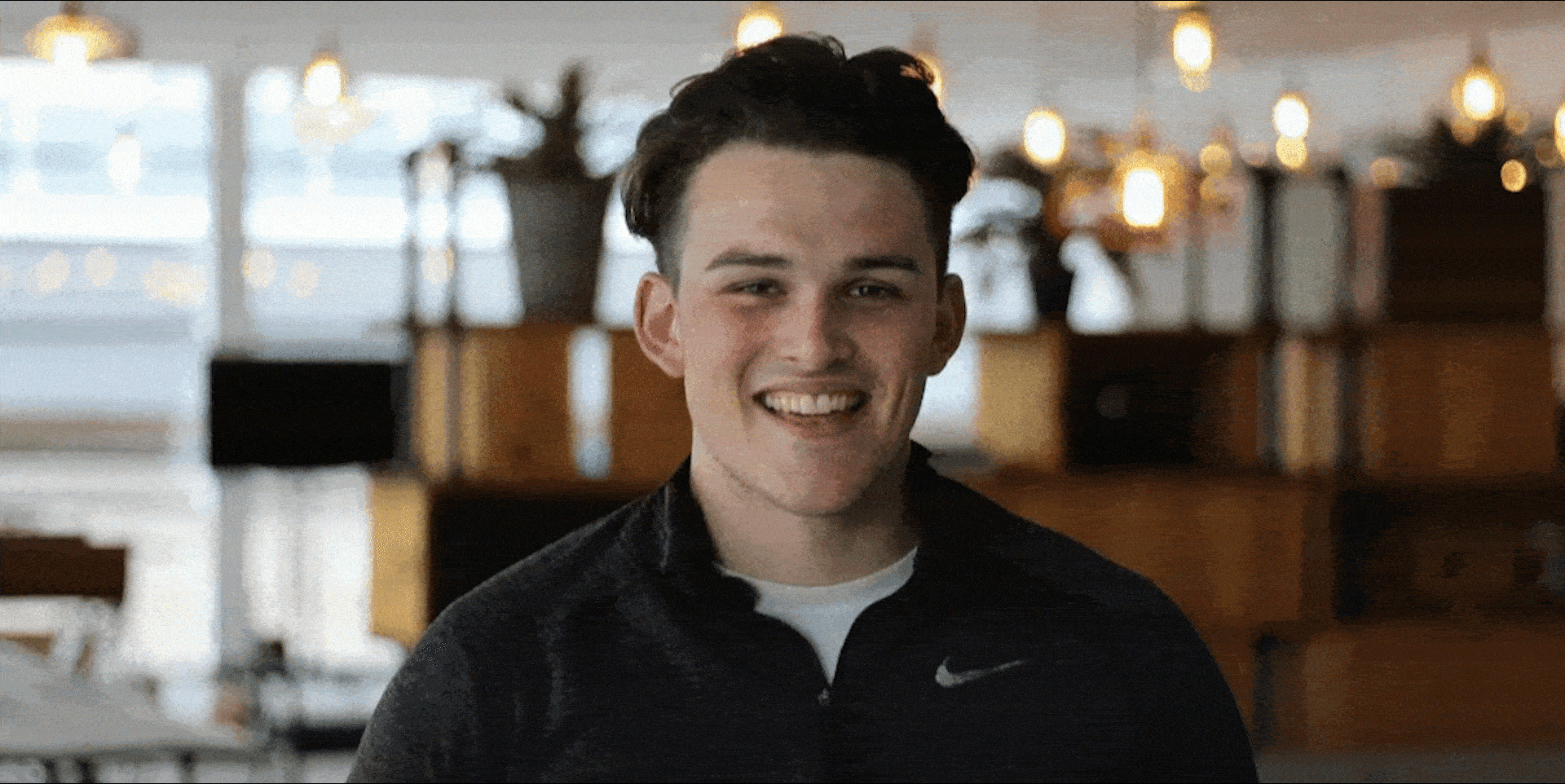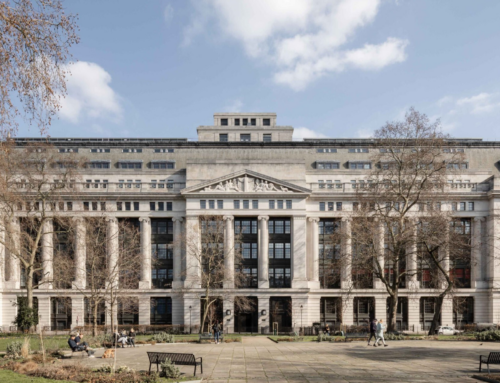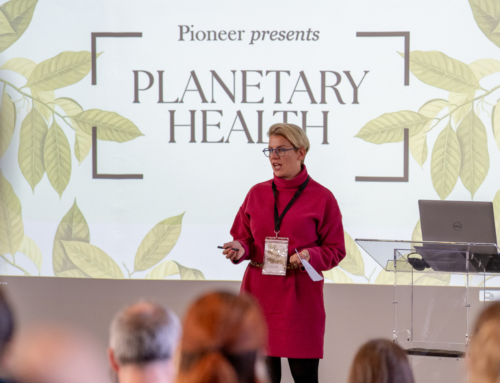We last met with Suji BFR founder Alex Birks in April 2019 to discuss his recent success as the winner of the Pioneer Group Accelerator and find out what was next for the tech startup. (Watch our short film with Alex from 2019 here >>> )
Almost two years later, Alex Birks is now CEO of a rapidly growing post-investment business and a leading player within the growing ‘quantified self’ movement. Successfully leading the company through a six-figure seed investment round, establishing relationships with a series of high-profile organisations and a first-of-its-kind partnership with a national governing body.
Alex joined us for a virtual catch up to discuss investment rounds, an ace partnership and why he stills believes in the power of getting things wrong.
Firstly, congratulations. A six-figure investment round and a new partnership with the LTA – what a start to 2021.
Yeah, thanks, it’s great. 2020 threw us a few curveballs, so it’s great to be pushing forward again with the backing of investors and partners who are really aligned with our mission. 2021 is definitely off to a great start.

Speaking of investors, Jamie and Alejandra Murray are among your investors – how did that happen? Was it via your partnership with the Lawn Tennis Association or the other way around?
Actually no. Jamie was aware of the strength benefits of blood flow restriction training and was looking for more information and potentially some equipment for on-the-road training. He reached out to our commercial director David, who introduced him to our device. And honestly, within a couple of days, Jamie, his partner Alejandra and I were on a Zoom call discussing the possibility of coming on board as investors. It was pretty surreal.
Our relationship with the Lawn Tennis Association (LTA) and Dan Lewindon, head of performance science and medicine at the LTA, initially came about when I took part in the Pioneer Group Accelerator (fka the BioCity Accelerator).
The LTA were among the first organisations I approached as part of the customer discovery process that the Accelerator Programme encouraged us to do, validating the initial concept. From there, we continued to work together as we refined the device. That enabled us to gain insightful data from the players themselves, highlighting the advantage of the Suji device in maintaining strength and managing pain.
For the LTA, looking after the well-being of players is a huge commitment. They’re focused on supporting elite players rehabilitation after injury and improving performance by using advanced personalised technology. Which is why I started Suji BFR in the first place. I was personally frustrated at my own slow progress after injury. Although this is the first partnership of its kind (the LTA is the national governing body for British Tennis), it feels like a natural fit.
The Murray investment aside, what else have you been up to? The last time we spoke (on camera), you had recently graduated from the Accelerator programme and had moved into new offices at BioCity Glasgow.
We started working with some elite teams such as the English National Ballet, Edinburgh Rugby and Loughborough University. They have all now adopted the Suji device as part of their training programmes, and the results we are seeing are fantastic.
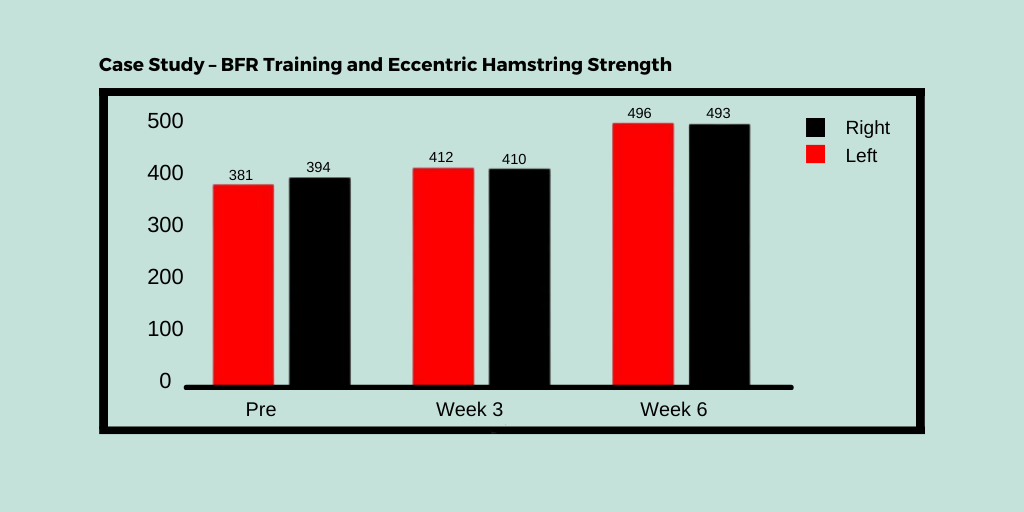
As well as the commercial side, we’ve been getting to grips with refining the device. We’ve spent a lot of time making sure every element within the device is spot-on. The cuff has to be comfortable on the skin but, at the same time, take some severe strain. While also being really user-friendly and easy enough for users to put it on themselves unaided. Which meant us focusing on getting the right materials. The control unit is weighted beautifully. It’s tactile, the dial is sleek, which means the overall device is now more aesthetically pleasing – I’m a total geek about it.
It’s bloody exciting. We’ve got a great trajectory, but I’m under no illusions; it’s going to be hard work. We’ve got our vision, but the road to getting it is tricky, but we’re tackling it head-on.
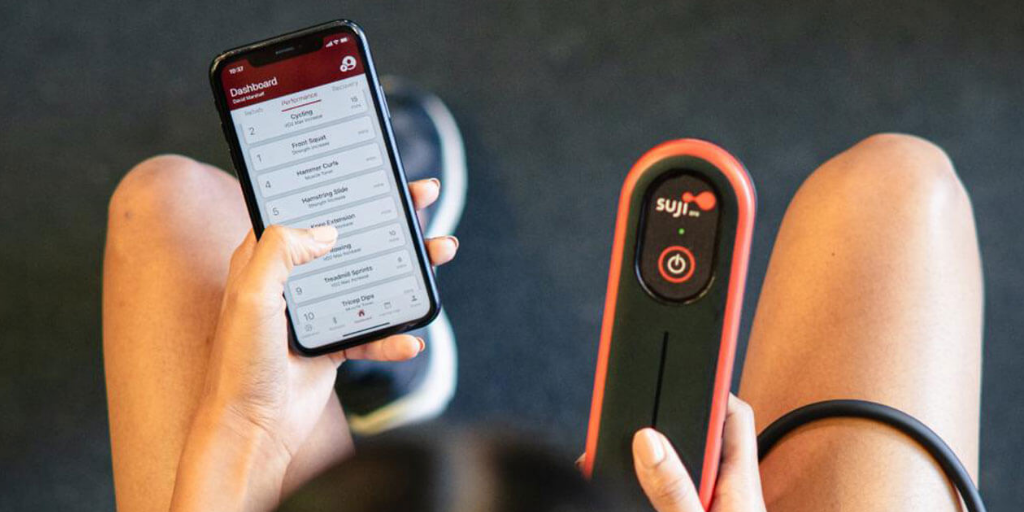
After winning the programme, we received investment (split into early-stage investment and support in-kind) and moved onto the Launch programme, an Accelerator extension. I continued working with the team, in particular, Colin Roberts (then BioCity Venture Development Director). Every couple of weeks, Colin and I would check-in. It’s a really productive and healthy working relationship where we can be frank with each other. Having him on the other end of the phone when I need support; was incredibly helpful.
Following the seed round, Colin is now the Investor Director on the Suji BFR board. Colin looks after our investors’ interests whilst also continuing to advise us and support the business to continue to develop.
A key element was introducing us to some people who have helped us get to where we are today. Those kinds of ‘warm introductions’ helps no end. We’re only just starting to get the Suji name out there, so approaching opportunities cold, like for example, when applying for the Royal Society of Edinburgh Enterprise Fellowship (which Birks was awarded in October 2019) or for grants such as the Scottish HGF; is tough. No one has any idea who you are; you’re an unknown. Colin was able to help with a lot of introductions and point us in the right direction for resources and promising opportunities.
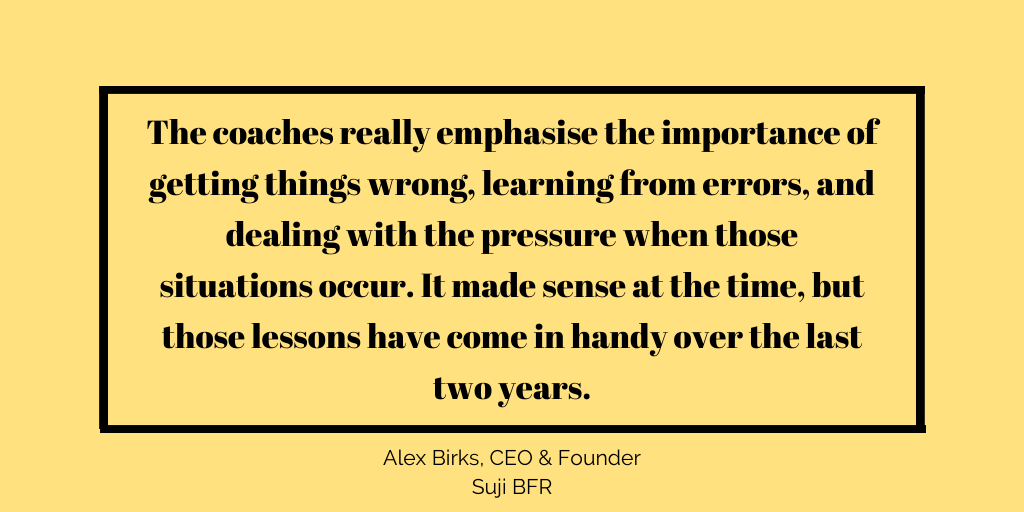
Is it what you were expecting, and did the Accelerator prepare you for the reality of growing a tech startup?
Absolutely. It’s been so useful. Right from the beginning, it was clear that the Accelerator wasn’t about teaching a theoretical approach to entrepreneurship. It was hands-on, daily reality-type entrepreneur coaching.
The coaches really emphasise the importance of getting things wrong, learning from errors, and dealing with the pressure when those situations occur. It made sense at the time, but those lessons have come in handy over the last two years.
There was a particular moment when one tiny valve put a product launch in jeopardy through no fault of the team. It was one of those experiences that we were able to learn from; create new processes, and develop new safety measures to mitigate against issues like that arising in the future. That’s not to say it wasn’t incredibly frustrating.
The need for that mental stamina has stayed with me. You first develop it during your customer discovery phase, as you’re constantly trying to validate your concept and realising that a lot of things you think are right are wrong – like really wrong. And that’s something you just have to get comfortable with. You learn how to pick yourself back up, dust yourself off and keep going. Because in customer discovery, product development and investment pitching, you need that mental stamina; you need the same resilience for all three.
What does the future hold?
Well, as I said, I love version 2 of the Suji device, but we’re already working on plans for the 3rd iteration. Our initial focus has been on supporting elite athletes, but over the next few years, the plan is to make BFR available to the general public.
There are enormous benefits for anyone looking to improve muscle strength and reduce pain. For instance, recently, one of the rehab strength and conditioning coaches we’re working with asked if he could lend it to his mother who suffers from arthritis, and her results have been fantastic.
Our next big step is to start growing our team, which I’m excited about. So, in terms of the future, we’ve got a lot planned.

